Star Trek Movie Rewatch: Star Trek: The Motion Picture (1979)
My peak Star Trek watching years came in the seventies. Those of us who were too young to catch the show when it first aired in the mid-sixties could gorge ourselves on seemingly endless reruns of three seasons worth of shows. It was a far cry from Netflix and calling up any episode any time but we made do.
As the seventies wound down my interest in Star Trek waned and I wasn’t really cognizant of what came along later — four more TV series and a heap of movies. I sought to rectify this in the early years of the new century, watching as many TV episodes as possible and some of the movies, but my intake of the latter was sporadic.
[Click on any of the images for bigger versions.]
So with the recent announcement of yet another Star Trek TV series I decided it was as good a time as any to rewatch the movies. What better place to start than with Star Trek Movie: The Motion Picture, the one that kicked it off. I’d seen bits and pieces of it over the years but as it unfolded I realized I had never seen it all the way through.
Even though it was the first instance of live-action Star Trek in more than a decade, the first movie doesn’t have a particularly good reputation. Of the original cast movies, only The Final Frontier ranks lower, as measured by the thoroughly scientific and foolproof method of Rotten Tomatoes rankings. The only other movie of the bunch to rank lower than The Motion Picture is Nemesis.
My aim is not to be a contrarian, but I actually liked TMP quite well. Which is not to say that it didn’t have its share of shortcomings, because it did. Yes, those endless shots of the Enterprise were well done but they got to be a bit much. Yes, those interminable shots of the Enterprise making its way through the innards of the big dumb object were very well done, especially by 1979 standards, but they too were a bit much. And that’s just for starters. But for the most part I thought the good outweighed the bad.
The history of TMP has been covered elsewhere much more capably than I could hope to so I’ll summarize very briefly. Suffice to say that after the original series was axed, ideas for another series and a movie were tossed around and the movie finally won out. Which surely had nothing whatsoever to do with the success of late Seventies SF hits like Star Wars and Close Encounters of the Third Kind.
To summarize the plot in the broadest terms, Earth finds itself threatened by the aforementioned big dumb object. Coincidentally the Enterprise is the only starship in position to be able to save the day. The audience is treated to long, lingering glances of the ship in drydock before Admiral Kirk comes aboard, wrests command from the existing captain, gathers the old gang about him and sets off to make things right. There’s a decent twist at the end of it all this which explains what the BDO is and what it was up to and there’s a halfhearted romantic subplot that’s resolved at about the same time.
As I’ve already suggested, there’s an okay movie at the heart of all this. The BDO (which is pretty knowledgeable, mind you, but lacking in street smarts) is a promising concept, as far as these things go, and is presented in a manner that conjures up all that stirring science fictional sense of wonder type stuff. In terms of concept (and pacing) I’d venture that TMP isn’t that far removed from Kubrick’s 2001: A Space Odyssey. But while Kubrick had a way of transforming the glacial pace of his yarn into something stylish and gripping, TMP director Robert Wise seemed to lack that rare skill. It should be noted that he took another crack at it some years later, with a director’s edition, but this was not the version that I watched.
I’ll close with a few random observations.
The theatrical release debuted on the 38th anniversary of the attack on Pearl Harbor. Make of it what you will.
Dr. McCoy’s first appearance here — sporting a spiffy Grizzly Adams beard and growling like a cranky grizzly bear — livens up the proceedings considerably. He’s used to good effect elsewhere, especially when he’s acting as Kirk’s conscience and daring to actually question his motives. The more TOS I rewatch the more I like the doctor.
Spock’s first appearance — ice ice, baby.
The uniforms weren’t much of an improvement over the TV show but at least they ditched those absurd mini-skirts. Except for Ilia, who sports the mini-skirt to end all mini-skirts and high heels, to boot. Why ask why.
Seeing a large group of crew members in one place once again raises the question of what they all do. One assumes that automation must be very sophisticated this far into the future. So what need is there for 400 or so crew members? I shouldn’t skip ahead but let’s note that in The Search for Spock a handful of the core cast members manage to operate the Enterprise quite nicely by themselves.
Klingon 2.0. The vaguely “Oriental” and “swarthy” Klingons of yesteryear have now given way to big imposing types with sporty body armor and latex headpieces.
William I. Lengeman III’s last review for us was Warring Supercomputers, Deep Space, and Cold Equations: 5 Tales from Tomorrow. He holds forth at www.wileng3.com.
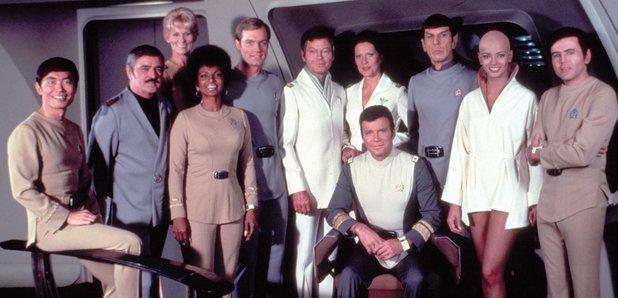
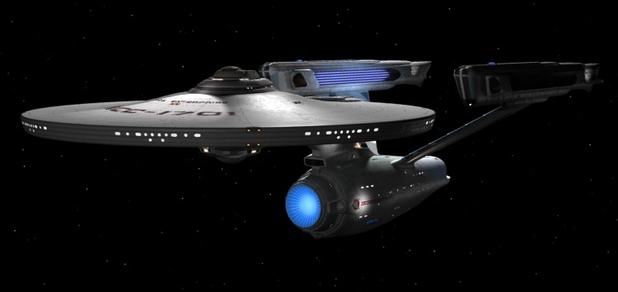
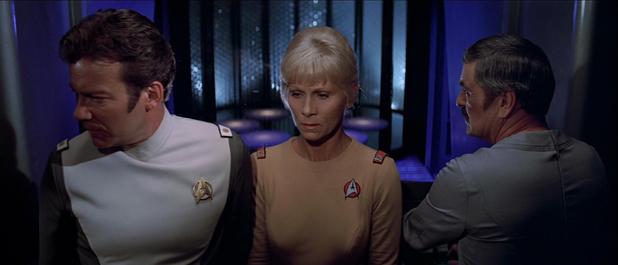
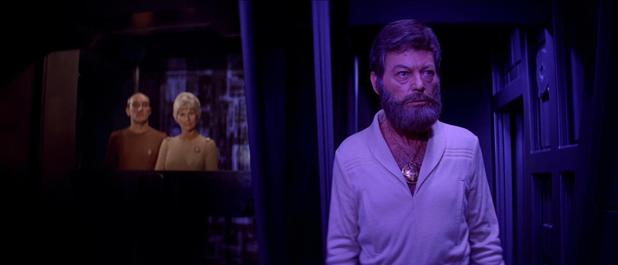
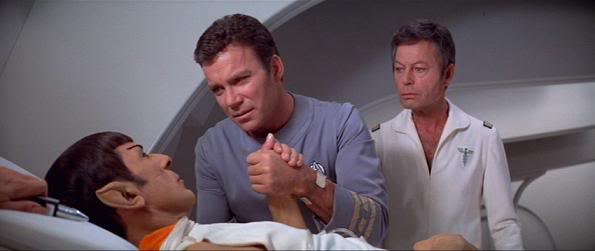
I also think this movie is underrated. It’s kind of ponderous and achingly earnest, but it’s also the most Star Trekky of the films in that the problem is solved by appealing to the better angels of our nature, not by just blowing stuff up.
I like TMP as around the best star trek movie. Wrath of Khan and Search for Spock and Voyage home were awesome also, but TMP was essentially a movie made to do justice to an unfairly cancelled TV show.
The science fiction also was of a type that is different – kind of like in science you have power and wonder science. One makes gadgets and bombs and drugs, the other keeps asking “Why” though it creates information the former needs desperately. Likewise, there’s science fiction that is adventure/fantasy in a hyper and futuristic or high tech escapist setting – then there’s science fiction that asks strange questions that for the fantastic setting are strangely real. Wells vs Verne is a good example of this contrast.
Hollywood works better with the “Buck Rogers” type till they poison it with political correctness so it’s not offensive to anyone and loses its only real edge. The cool “Wonder” edge of science ficiton become rare movies for they are brilliant and talked about forever but to the generic crowd boooorrrinnng…
It was a really neat concept on several levels at the end revealed. And it opened more questions, thinking about the origins of that BDO and what it implied.
The art was good too – I liked the space suits and tech design, like the EVA suit Spock borrowed. Gernsback old sci-fi meeting modern science that might make it possible. Would have if the Govern Not hadn’t slashed Nasa to give the Koch brothers and their type more tax breaks, rather. But the art design, “Syd Mead” I think – kids of the 70s and 80s saw them in lots of library books and now they go for big ebay/amazon collector prices.
It’s not a bad movie, but a rather unique one. The plot and pacing certainly have big problems, but once you look beyond that and get on board for the overall experience, it’s something quite special.
It’s not what’s actually on the screen that’s great, but the things that the movie implies.
Another ’70s teen here, whose discovery of STAR TREK really happened through Stephen Whitfield’s THE MAKING OF STAR TREK and James Blish’s novelizations…syndication of the series unfortunately never made it to the Michigan hinterlands where I grew up.
I recall seeing the motion picture’s premiere in East Lansing, MI. The line for it stretched around the block, and I attended with an Alien doll perched atop my shoulder. I was satisfied enough with the story and special effects, but was really bowled over by Jerry Goldsmith’s delicious (and hastily composed) soundtrack. I did notice that my satisfaction was not shared by the crestfallen Star Trek club members clustered outside the theater afterwards, however.
The first jj Abrams movie was my first exposure to Star Trek. I enjoyed it enough that I wanted to go back and watch the original series. Thanks to Netflix I was able to watch all of the OS and the movies.
The first movie is hard to sit through with the constant slow motion around the different ships. It had about the same plot length of an ep movie.
The actual plot parts of the movie are great. Especially every scene with the Dr.
I’m looking forward to going through these movies. 5 is not as bad as long time fans make it out to be. I would rather watch 5 over 1 any day of the week. Unless it was an highly edited version of TMP.
I agree that it’s an underrated movie – I saw it when it came out and was ambivalent, but watched it again just a couple of years ago (for the first time since its original release) and liked it very much. But…those uniforms! All I can say is that tribbles must have gotten into the quadrotriticale…
TMP has grown on me over the years. I saw it at the age of 7 and didn’t much know what to make of it. When I rediscovered Trek in the early 90’s, I hated TMP, for being all special effects and no story, or at least not enough story. Since the Director’s Edition came out on DVD about 15 years ago I have learned to appreciate it much more.
I guess I’ll be the outlier here– STTMP was a crushing disappointment to my young self back in the day, and it has remained a crushing disappointment every time I’ve seen it since.
There are two reasons for this- the first is that given the high points (and it does have its high points), given what they were capable of, why did they low-ball all of it on this particular story? The second, and far more damning is that the particular story they were telling was just “Nomad” again. Instead of the vastly-powerful-entity being inside the Enterprise, the Enterprise is inside of the vastly-powerful-entity.
Honestly, that’s the second time this planet of living machines has damn near destroyed the Earth! Starfleet should really do something about that…